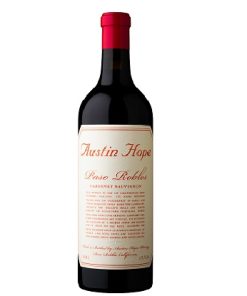-
×
 2020 Chakana Winery Malbec Finca Los Cedros 750ML
1 × $20.99
2020 Chakana Winery Malbec Finca Los Cedros 750ML
1 × $20.99 -
×
 2021 Austin Hope Cabernet
1 × $59.99
2021 Austin Hope Cabernet
1 × $59.99 -
×
 2020 Didier Dagueneau Pur Sang
1 × $154.00
2020 Didier Dagueneau Pur Sang
1 × $154.00 -
×
 2016 Chateau La Gaffeliere Saint-Emilion Grand Cru Clos La Gaffeliere 750ML
1 × $130.99
2016 Chateau La Gaffeliere Saint-Emilion Grand Cru Clos La Gaffeliere 750ML
1 × $130.99 -
×
 2022 Martinelli Winery Pinot Noir Bella Vigna Sonoma Coast 750ML
1 × $45.99
2022 Martinelli Winery Pinot Noir Bella Vigna Sonoma Coast 750ML
1 × $45.99 -
×
 Caiarossa 2005 1 × $84.99
Caiarossa 2005 1 × $84.99 -
×
 2021 Alexana Terroir Selection Pinot Noir
1 × $48.00
2021 Alexana Terroir Selection Pinot Noir
1 × $48.00 -
×
 2014 Chateau Poujeaux Moulis-en-Medoc 1.50L
1 × $98.99
2014 Chateau Poujeaux Moulis-en-Medoc 1.50L
1 × $98.99 -
×
 2021 Poet's Leap Riesling Columbia Valley 750ML
1 × $25.99
2021 Poet's Leap Riesling Columbia Valley 750ML
1 × $25.99 -
×
 2017 Bodegas Alion Ribera del Duero 1.50L
1 × $329.99
2017 Bodegas Alion Ribera del Duero 1.50L
1 × $329.99 -
×
 2015 Fattoria Le Pupille Morellino di Scansano Riserva
1 × $33.00
2015 Fattoria Le Pupille Morellino di Scansano Riserva
1 × $33.00 -
×
 2022 Frank Family Vineyards Cabernet Sauvignon
1 × $49.99
2022 Frank Family Vineyards Cabernet Sauvignon
1 × $49.99 -
×
 2020 Jean Marc Brocard Chablis 1er Cru Montee de Tonnerre
1 × $64.00
2020 Jean Marc Brocard Chablis 1er Cru Montee de Tonnerre
1 × $64.00
2017 Fess Parker The Big Easy
$28.40
Out of stock
SKU: 2362845
Categories: 2017, 750ML, Red, United States
2017 Fess Parker The Big Easy
2017 Fess Parker The Big Easy The 2017 The Big Easy, Fess Parker’s Syrah, Grenache and Petite Sirah blend, is powerful, inky and dense, and yet it is also impeccably balanced. Chocolate, plum, cedar, licorice and leather are some of the many notes that race out of the glass in this decidedly sumptuous, flamboyant wine. Readers who like overt, generous reds will find much to like here. I find myself increasingly drawn to The Big Easy now that it is a bit less heavy than it was years ago. This rich, hedonistic Santa Barbara red is sure to find many fans.
Fess Parker
When Fess Parker purchased the 714 acre Foxen Canyon Ranch in 1988 his plan was to run cattle, plant a few acres of vineyard and perhaps someday, establish a small winery. His dream was to start a family business that he could pass on to future generations. Dreams do come true.
Eli Parker and his sister, Ashley, remain involved as stewards of their father’s vision. Ashley’s husband, Tim Snider, serves as winery President and oversees the sales, marketing and day to day operations of the winery. Blair Fox assumed the role of head winemaker in 2005.
The home ranch vineyard, named for Fess’s late son-in-law, Rodney, has earned a great reputation for the quality of its Rhône varietals, while long term contracts with some of the finest vineyards in the Sta. Rita Hills AVA are the fruit sources for the winery’s Burgundian offerings.
In recent years the winery has sharpened its focus toward production of more small lot, vineyard designated and clonal selection Rhône and Burgundian varietals.
Red wine
Red wine has been prevalent since prehistory (the period before written records) as winemaking originated and spread throughout the world. In this case, “red blend” refers to any red wine that contains more than one red grape variety in the final product, though certain red blends can have their own designation as varietal wines despite comprising multiple grapes.
For much of the history of European wine, red blends were in fact more common than single varietals, as winemaking was typically region-centric and featured grapes consolidated from vineyards across a given area. One famous example of this practice is the Bordeaux blend, which originated in the 18th or 19th century and usually comprises Cabernet Sauvignon, Merlot and Cabernet Franc.
Though prominent red blends such as Bordeaux still remain popular, many red blends have been associated with lower quality due to the assumption that the term indicates cheaper table wines. However, many high-quality wine producers still elect to produce red blends, and these wines can in fact offer many unique and delicious flavors due to the winery’s ability to custom design the profile of their product.
Related products
Deal
Wines!
Wines!
SAVE 36% 98pts Andrew Jeffords Decanter
 2021 Austin Hope Cabernet
2021 Austin Hope Cabernet  2020 Didier Dagueneau Pur Sang
2020 Didier Dagueneau Pur Sang  2016 Chateau La Gaffeliere Saint-Emilion Grand Cru Clos La Gaffeliere 750ML
2016 Chateau La Gaffeliere Saint-Emilion Grand Cru Clos La Gaffeliere 750ML  2022 Martinelli Winery Pinot Noir Bella Vigna Sonoma Coast 750ML
2022 Martinelli Winery Pinot Noir Bella Vigna Sonoma Coast 750ML  Caiarossa 2005
Caiarossa 2005  2021 Alexana Terroir Selection Pinot Noir
2021 Alexana Terroir Selection Pinot Noir  2014 Chateau Poujeaux Moulis-en-Medoc 1.50L
2014 Chateau Poujeaux Moulis-en-Medoc 1.50L  2021 Poet's Leap Riesling Columbia Valley 750ML
2021 Poet's Leap Riesling Columbia Valley 750ML  2017 Bodegas Alion Ribera del Duero 1.50L
2017 Bodegas Alion Ribera del Duero 1.50L  2022 Frank Family Vineyards Cabernet Sauvignon
2022 Frank Family Vineyards Cabernet Sauvignon 


